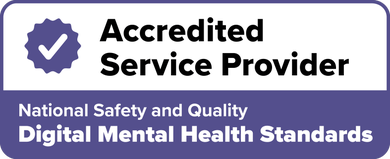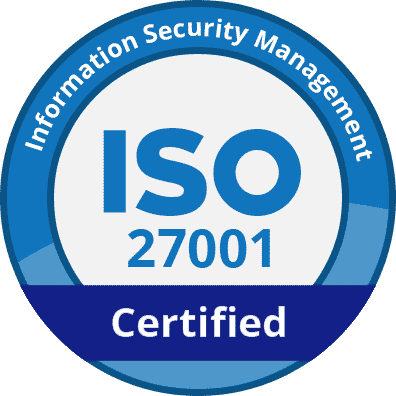When and how to switch EAP providers
In a Nutshell
Low engagement with your EAP doesn’t always mean the service is poor. Lack of awareness or trust may be the issue.
Signs you may need a new provider include low usage despite promotion, poor support quality, and a lack of tailored services.
Communicating EAP changes with transparency and care is key to maintaining trust and encouraging future uptake.
Before you consider changing your Employee Assistance Program (EAP) provider, it’s worth taking a closer look at how your current initiative is performing. Sometimes the issue isn’t with the EAP itself, but with how it's introduced and communicated within your organisation.
In this article, we’ll walk through how to evaluate your EAP, what signs to look for that suggest a change is needed, and how to support your team through a smooth and thoughtful transition.
Evaluating your current EAP
1. Assess engagement rates
Low engagement is often the first sign that your EAP may not be hitting the mark. While usage rate can vary, the average annual engagement typically ranges from 5 to 10 percent. In Australia, a 2009 study by the Employee Assistance Professional Association of Australasia, Inc. reported a national rate of 11.43 percent, which can also serve as a useful benchmark in the absence of more recent data.
Keep in mind that low numbers don’t always mean the service itself is lacking. Often, employees are unaware that an EAP exists, unsure how to access it, or concerned about confidentiality. Stigma around mental health may also prevent people from engaging with any wellbeing tools.
2. Listen to your staff
The best way to understand what’s working and what’s not is to ask. A short, anonymous staff survey can offer valuable insights into awareness, trust, and actual usage of the service.
You might include questions about whether staff know how to access the EAP, feel confident in its confidentiality, and believe it meets their needs.
This kind of feedback can highlight hidden gaps and help guide your next steps. It can also give your team a voice in shaping the wellbeing support they receive, which builds trust and engagement over time.
3. Review internal communications
Even the most comprehensive EAP won’t work if employees don’t know it’s there or forget about it. Often, a lack of uptake comes down to poor promotion.
Make sure you’re regularly sharing information about the service through the channels your team uses most—whether that’s email, Slack, the intranet, one-on-ones, or team meetings.
Introduce the EAP during onboarding, include it in staff newsletters, and ensure managers know how to speak about it confidently. When employees see that leaders value the service, they’re more likely to consider using it themselves.
Signs you may need a new EAP provider
If you’ve promoted your current employee assistance program, gathered feedback from your team, and still find that it’s not making the impact you hoped for, it could be time to consider a different provider. While some issues are easy to spot, others are more subtle and often missed in typical EAP reviews. Below are seven signs that suggest your current provider may no longer be the right fit for your organisation.
1. Engagement is still low even after consistent promotion
If your communication efforts have been clear, regular, and visible, but usage rates remain stagnant, it may point to a deeper issue. Sometimes employees are aware of the service but don't trust it, or they find the process of accessing support uninviting or confusing.
Consider a provider that’s easy to use and has clear confidentiality policies. When you find a promising provider, request a demo so you can better understand what they offer and ask any questions you might have.
2. Employees report poor support experiences
When someone reaches out for mental health support, the quality of that interaction matters enormously. If employees share that they felt rushed, misunderstood, or unsupported during their sessions, it's important to take that seriously.
An EAP should offer care that feels personalised, professional, and genuinely helpful. Any consistent concerns around empathy, accessibility, or relevance should not be overlooked.
3. Reporting lacks meaningful insight
Usage reports should offer more than just numbers. A good EAP provider will give you anonymised data that highlights patterns over time and offers practical, evidence-informed suggestions. If your current reports are vague, infrequent, or overly generic, they aren’t helping you understand your team’s needs or how to better support them.
4. The service doesn’t reflect your workplace culture
An often missed but important consideration is whether the EAP truly fits your organisation's values and culture. For example, if inclusion and cultural awareness are central to your team, the EAP should offer practitioners who understand diverse experiences.
If your workforce is predominantly young and tech-savvy, the service should feel modern and accessible. An EAP should never feel like an external add-on. It should feel like an extension of your care for your people.
5. Access is limited or outdated
Convenience and flexibility have become standard expectations in the workplace, especially since the shift toward hybrid and remote work. If your EAP only offers in-person appointments during business hours or has a clunky booking system, it may no longer meet your team's needs.
Look for services that offer online scheduling, virtual sessions, after-hours support, and mobile-friendly access to care.
6. There’s little to no focus on prevention
If your current EAP only offers counselling after issues arise, it may be missing a key piece of the puzzle. Preventative support plays a vital role in helping employees stay mentally well, not just recover during a crisis.
Modern EAP providers, like Talked, offer more than just one-on-one sessions. They provide access to self-help tools that employees can use at any time, including guided mental health content and an in-platform journaling tool to encourage daily reflection and emotional awareness. These kinds of resources empower individuals to manage their wellbeing proactively, even if they’re not ready for a counselling session.
It’s also worth asking prospective EAP providers if they can facilitate webinars or workshops. Topics like stress management, burnout prevention, or mental health awareness can support early intervention and help create a culture that prioritises wellbeing before things reach breaking point.
How to communicate an EAP switch to your team

Once you’ve decided to switch EAP providers, thoughtful communication is key. Your employees need to feel informed, reassured, and supported throughout the transition.
1. Be open and clear
Let your team know that you’ve reviewed the existing service, listened to their feedback, and made a decision to move to a provider that better meets their needs. Keep the message simple, transparent, and supportive.
You might say something like, “We’ve taken on board your feedback and reviewed how our EAP is working. To better support your wellbeing, we’re introducing a new provider with enhanced services and easier access.”
2. Share practical details
Make it easy for your team to understand what’s changing and how it affects them. Clearly outline important information like the name of the new provider, when the change will take effect, how to access the new service, what types of support are available, and how confidentiality is protected.
3. Use a mix of communication channels so that no one misses the message.
This might include emails, intranet updates, posters in shared spaces, or all-staff meetings. It’s also ideal to remind managers to reiterate the changes during one-on-one check-ins with their team.
4. Reassure and normalise
Some employees may worry about the change, especially if they’ve used the current service or are considering doing so. Reassure them that past sessions remain confidential, nothing is transferred without consent, and the new provider offers the same (or better) privacy and support.
Encourage leaders and managers to speak positively about the new provider, and if possible, have a representative from the EAP speak directly to your team. Personal connection goes a long way in building trust.
Final thoughts
Switching EAP providers isn’t a decision to take lightly. But if your current service isn’t being used, trusted, or meeting the needs of your people, it may be the most caring thing you can do.
By taking the time to listen to your team, reflect on the service’s effectiveness, and communicate with empathy, you can set the stage for a stronger culture of wellbeing.
At Talked, we believe mental health support should be personal, accessible, and tailored to your team. Our EAP solution connects employees with registered Australian psychologists and counsellors through a user-friendly digital platform. We work closely with employers to build supportive, flexible services that meet the evolving needs of modern workplaces.
If you’re exploring new options, don’t hesitate to reach out.
Essential Reading
Free Mental Health Tests
Recommended Therapists Available Now
QLD
Psychologist
As a psychologist, I value each client as an individual with unique life experiences, skills, and talents. I love helping my clients clarify what makes life rich, full, a...More
NSW
Psychologist
Hello and welcome! I look forward to getting to know you and working with you to achieve your goals for therapy. I am passionate and dedicated to support my clients, ensu...More
VIC
Clinical Psychologist
I'm Michael, a clinical psychologist with over a decade of experience supporting children, adolescents, and adults through life's challenges. My practice is grounded in c...More








